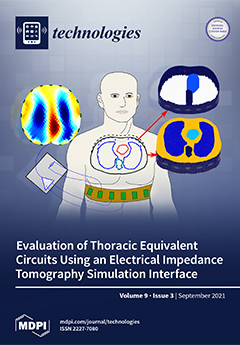Open AccessEditor’s ChoiceArticle
Exploiting Biomedical Sensors for a Home Monitoring System for Paediatric Patients with Congenital Heart Disease
by
Massimiliano Donati, Silvia Panicacci, Alessio Ruiu, Stefano Dalmiani, Pierluigi Festa, Lamia Ait-Ali, Francesca Mastorci, Alessandro Pingitore, Wanda Pennè, Luca Fanucci and Sergio Saponara
Cited by 1 | Viewed by 2470
Abstract
Congenital heart disease, the most frequent malformation at birth, is usually not fatal but leads to multiple hospitalisations and outpatient visits, with negative impact on the quality of life and psychological profile not only of children but also of their families. In this
[...] Read more.
Congenital heart disease, the most frequent malformation at birth, is usually not fatal but leads to multiple hospitalisations and outpatient visits, with negative impact on the quality of life and psychological profile not only of children but also of their families. In this paper, we describe the entire architecture of a system for remotely monitoring paediatric/neonatal patients with congenital heart disease, with the final aim of improving quality of life of the whole family and reducing hospital admissions. The interesting vital parameters for the disease are ECG, heart rate, oxygen saturation, body temperature and body weight. They are collected at home using some biomedical sensors specifically selected and calibrated for the paediatric field. These data are then sent to the smart hub, which proceeds with the synchronisation to the remote e-Health care center. Here, the doctors can log and evaluate the patient’s parameters. Preliminary results underline the sensor suitability for children and infants and good usability and data management of the smart-hub technology (E@syCare). In the clinical trial, some patients from the U.O.C. Paediatric and Adult Congenital Cardiology- Monasterio Foundation are enrolled. They receive a home monitoring kit according to the group they belong to. The trial aims to evaluate the effects of the system on quality of life. Psychological data are collected through questionnaires filled in by parents/caregivers in self-administration via the gateway at the beginning and at the end of the study. Results highlight an overall improvement in well-being and sleep quality, with a consequent reduction in anxious and stressful situations during daily life thanks to telemonitoring. At the same time, users reported a good level of usability, ease of data transmission and management of the devices.
Full article
►▼
Show Figures





